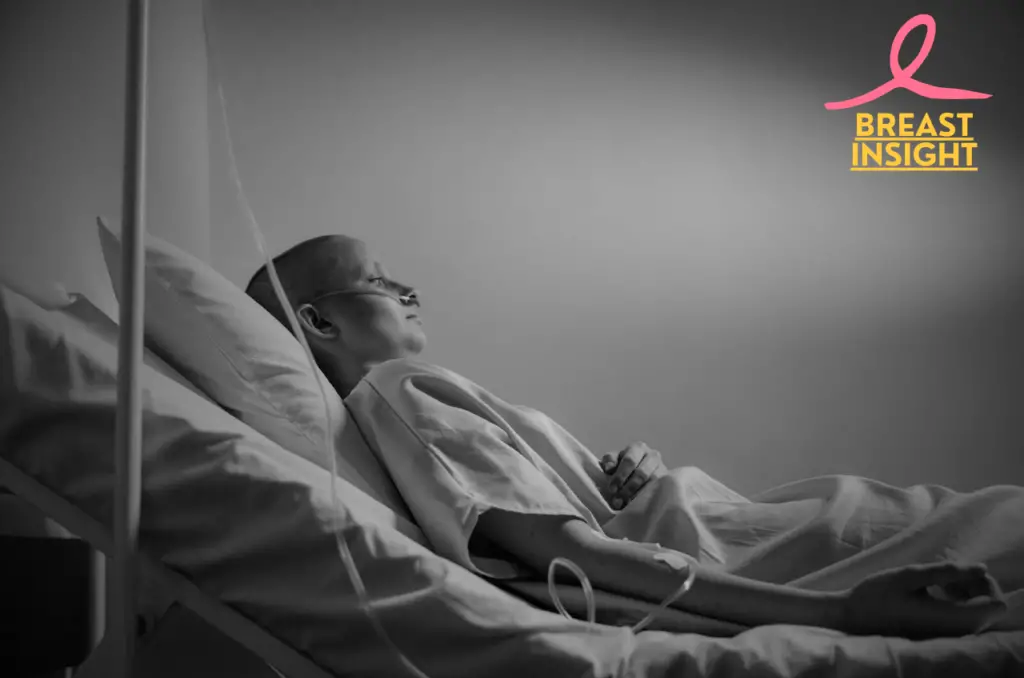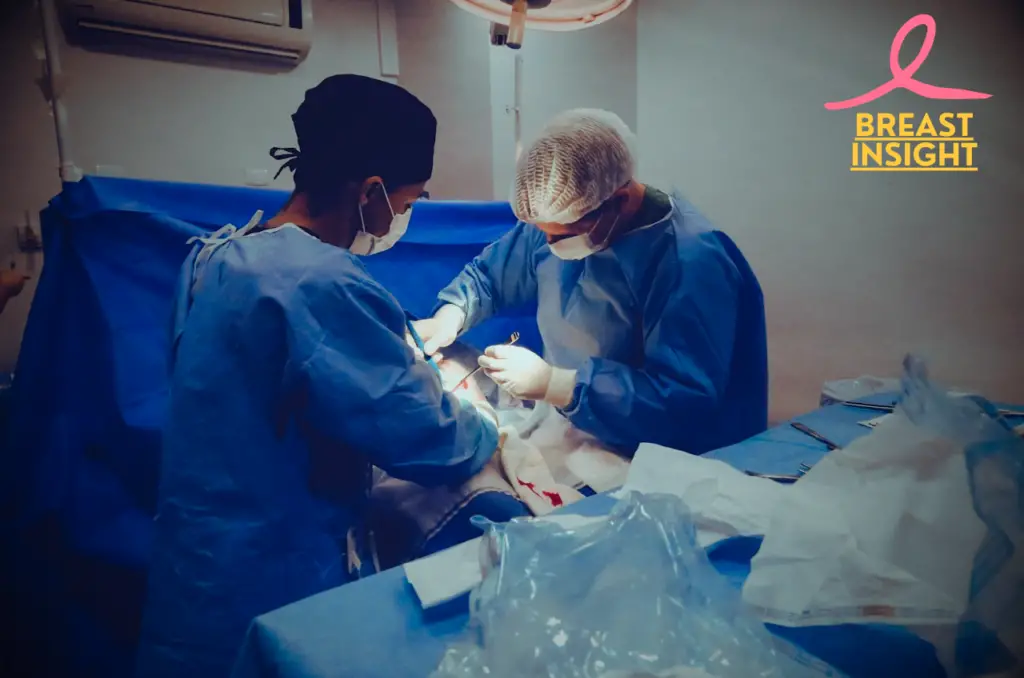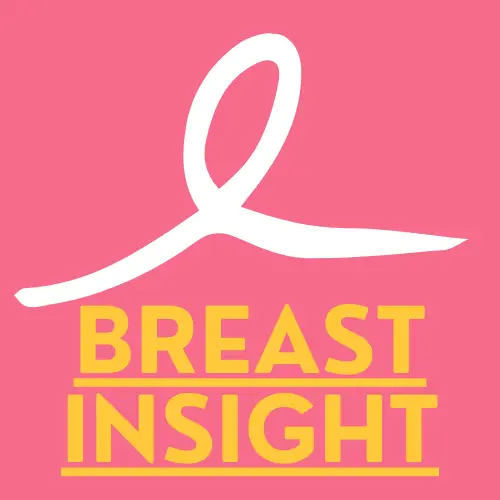Breast cancer: two words that fill fear in the hearts of many. But, despite the fear, there is hope. The number of deaths from breast cancer, which was once very high, is now telling a better story. But what’s causing this change, and how can we keep the good trend going?
We learn and are discovering what influences death rate, and new treatments continue to be found for breast cancers. Finding the cancer early determines much of survival; through better treatments, people live even longer. Yet there is more to accomplish. How do we make this death rate lower still, so life can be saved even further?
In this post, we will analyze breast cancer mortality closely and get to know it in depth. For a better understanding of breast cancer, its causes, symptoms, and available treatments, visit our comprehensive guide on breast cancer. We will discuss from the basic mortality rates up to the new treatments that are creating a difference. So, are you ready to learn and help in the fight against breast cancer? Let’s start our journey of discovery and hope.

Understanding Breast Cancer Mortality Rates
A. Meaning and importance
The number of deaths from breast cancer per 100,000 people in a given population over a specified period is the breast cancer mortality rate. This figure is important for knowing how breast cancer affects public health and for checking how well prevention, detection, and treatment methods work.
B. Global statistics
Breast cancer remains a major health issue globally, with different death rates in various regions. Here are some global statistics of breast cancer deaths:
| Region | Mortality Rate (per 100,000) |
| North America | 12.6 |
| Europe | 15.5 |
| Asia | 11.1 |
| Africa | 17.3 |
| Oceania | 11.9 |
These numbers point out the difference in breast cancer results all over the world, which should be addressed by improving healthcare access and resources in areas with higher death rates.
C. Change over time
In most developed countries, the past few decades have seen a decline in the death rate from breast cancer:
- Steady decline since the 1990s in North America and Western Europe
- Steady but slow decline in Eastern Europe and some Asian countries
- Slightly higher stable rates in developing countries
These trends can be attributed to:
- Advances in early detection methods
- Proper treatment plans
- Increased awareness and screening programs
- Easy access to healthcare in the rich countries
D. Demographic differences
Interestingly, breast cancer deaths differ enormously between different population groups:
- Age: Death rates tend to increase with age, particularly for females aged above 70.
- Race/Ethnicity: African American women die more often than women from other racial groups, even though they get sick less often.
- Socioeconomic status: The poor suffer the greatest death rates due to unavailability of health and screening services.
- Geography: Generally, individuals in rural settings tend to have high mortality rates than those in urban areas. This is largely because they lack access to quality health care.
If you’re awaiting diagnostic procedures, such as a biopsy, and feeling anxious, don’t miss our helpful guide on staying calm during a breast biopsy. Understanding what to expect can make a significant difference.
Knowing about these differences in groups of people is important for creating specific help and lessening gaps in breast cancer results. Focusing on these issues allows healthcare systems to aim to lower the total number of deaths from breast cancer and increase survival rates for everyone.
Taking a closer look at what impacts the deaths of breast cancer patients, there is a need to consider in how such differences in individuals work with other risks and results of treatment.

Factors Influencing Breast Cancer Mortality
Now that we know what breast cancer death rates are, let’s talk about the important factors that affect those rates. Understanding these factors will enable us to better understand why people might have a higher risk of dying from breast cancer and give us areas where we might help.
A. Stage when Diagnosed
When breast cancer is determined, staging is very crucial for the survival of the patient. Its early discovery increases the survival chances.
- Stage 0 and I: almost 100% chance of survival at 5 years
- Stage II: 5-year survival rate of about 93%
- Stage III: 5-year survival rate is about 72%
- Stage IV: survival at 5 years around 22%
For early detection, tools like mammograms, ultrasounds, and breast MRIs play a critical role. Curious about how a breast MRI works? Check out our comprehensive guide on breast MRI benefits and limitations to learn more.
B. Access to Health Services
Receipt of good healthcare services is quite vital in reducing deaths caused by breast cancer. These include:
- Routine screenings and follow-ups
- Rapid diagnosis and treatment
- Access to specialized cancer care centers
- Better treatment options are available
| Healthcare Access Factor | Impact on Mortality |
| Regular screenings | Significant decrease |
| Delayed diagnosis | Significant increase |
| Specialized care | Moderate decrease |
| Advanced treatments | Moderate decrease |
C. Treatment Effectiveness
The success of breast cancer treatments directly influences death rates. New treatment options have resulted in better results:
- Surgery: Lumpectomy or mastectomy
- Radiation therapy
- Chemotherapy
- Hormone therapy
- Target therapy
- Immunotherapy
D. Genetic Risk
Certain genetic changes affect the risk of breast cancer or affect mortality rates.
People with these genes may have to go through tests or preventive measures more frequently.
E. Lifestyle Factors
Many lifestyle factors can cause variations in breast cancer death rates:
- Obesity: Increases risk and may impact treatment outcomes
- Alcohol consumption: Moderate to heavy drinkers at highest risk
- Exercise: This can reduce the risk and enhance the prognosis
- Diet: A balanced diet, rich in nutrients may protect
- Smoking: Can raise the risk and make treatment less effective
Understanding these risk factors is very important in crafting good plans to reduce breast cancer death rates. By eliminating or modifying risk factors under our control, making medical care more accessible, and enhancing treatment options, we can strive for better outcomes for those living with breast cancer. In the following discussion, we will examine the impact of early detection and screening on breast cancer death rates.

Early detection and screening impact
Finding breast cancer early and testing for it significantly reduces deaths from the disease. As we look into this important part of managing breast cancer, we will examine different ways that have helped reduce breast cancer deaths and increase survival rates.
A. Mammography Benefits
Mammography is the best method for checking for breast cancer. It helps find cancer early, which is very important. Regular mammograms can find breast cancer up to two years before a lump can be felt, making treatments more effective and increasing chances of survival.
| Mammography Benefits | Impact on Mortality Rate |
| Early detection | 20-40% reduction |
| Improved prognosis | Higher 5-year survival |
| Less invasive treatment | Reduced morbidity |
Curious about how diagnostic mammograms save lives? Explore our detailed guide on five life-saving facts about diagnostic mammograms to learn more about their crucial role in breast cancer management.
B. Self-examination Importance
Early detection of problems is very important, but professional check-ups cannot be replaced by breast self-exams. Regular self-exams help women know their breast tissue well so that any changes can be noticed early.
Important points for good self-reflection:
- Conduct monthly, ideally 3-5 days after menses
- Compare for size, shape, or texture differences
- Palpate for masses, firmness, or any lumps
- Inform your doctor about any changes right away
C. Periodic Visit
Regular medical check-ups keep breasts healthy and reduce the chances of dying from breast cancer. In such visits, healthcare workers are able to
- Perform clinical breast examinations
- Evaluate the risk factors
- Suggest proper scheduling procedures
- Explain how to prevent breast cancer
It gives the opportunity to discuss new screening technologies, including personalized screening methods on a risk basis for the individual.
D. New Screening Technologies
New breakthroughs in breast cancer screening technologies improve the early detection capabilities and survival rates. Some of these are promising:
- Digital Breast Tomosynthesis (3D Mammography): Generates clearer images and also eliminates false positives.
- Automated Breast Ultrasound: ABUS is especially helpful to women who have dense breast tissue.
- Molecular Breast Imaging: Detects cancers that may not be diagnosed through mammograms.
- Artificial Intelligence in reading mammograms: Enhances the tests’ accuracy and speed.
There are great promises that new technologies offer toward bettering the screening of breast cancer and helping reduce death tolls.
This helps us achieve the diagnosis of breast cancer in an earlier and more accurate stage by using the old and new methods of screening. As we improve these screening methods time after time, we look forward to reducing breast cancer deaths. Now we shall examine one important development in breast cancer therapy that has greatly improved its outcomes and survival.

Advances in breast cancer treatment
Now that we have gone over how important early detection and screening are, let’s discuss new and exciting improvements in breast cancer treatment that change patient care and make results better.
Targeted therapies
Targeted therapies have become very important in the treatment of breast cancer. These new drugs target cancer cells and cause less damage to healthy cells, thus giving better treatment with fewer side effects. Some of the well-known targeted therapies are:
- HER2-targeted medicines (like Herceptin and Perjeta)
- CDK4/6 blockers (like Ibrance and Verzenio)
- PARP inhibitors- Lynparza and Talzenna
| Targeted Therapy | Mechanism of Action | Suitable for |
| HER2-targeted drugs | Block HER2 protein | HER2-positive breast cancers |
| CDK4/6 inhibitors | Prevent cancer cell division | Hormone receptor-positive, HER2-negative breast cancers |
| PARP inhibitors | Prevent DNA repair in cancer cells | BRCA-mutated breast cancers |
Immunotherapy Advances
Immunotherapy has proved hopeful in the treatment of some forms of breast cancer by exploiting the host’s immune system. Treatments based on this philosophy work on the premise that
- Enhance the immune system’s ability to identify and kill cancer cells
- Stopping proteins that inhibit immune cells from killing cancer cells
- Enhance the body’s ability to fight cancer
Recent FDA approvals, such as Tecentriq for triple-negative breast cancer, have provided new ways to treat the disease, especially for patients who have few choices.
Personalized medicine approaches
Personalized medicine is changing the current way of treating breast cancer based on customizing treatments for each patient according to their genes and tumor features. This method includes
- Identification of unique genomic mutations is thought to trigger growth
- Liquid biopsies to monitor treatment response and detect recurrence early
- AI tools that help doctors make decisions about the best cancer treatments
These personalized approaches are leading to more effective treatments, improving survival rates while minimizing side effects. Interested in complementary diagnostics? Learn how breast ultrasound technology is advancing early detection to support personalized treatment plans.
These tailored plans lead to better and more effective treatments. This might result in greater survival rates with unwanted side effects.
Surgical Advances
Improvements in surgical procedures have not contributed little to breast cancer treatment. Among them are:
- Oncoplastic surgery: Cancer removal is performed alongside immediate breast reconstruction.
- Nipple-sparing mastectomy: Maintain the areola and nipple to enhance aesthetics.
- Axillary reverse mapping: This reduces the postoperative risk of lymphedema by sparing lymphatic pathways.
- Intraoperative radiation: Administers a dose once in the operating room thereby shortening the period involved in treatment.
These new surgical techniques kill not only the cancer but also better the lives of survivors of breast cancer.
As we continue, these new treatments are continually changing the face of breast cancer care, giving patient’s new hope and better results. In the next section, we will look at ways to further lower breast cancer death rates.

Reducing Breast Cancer Mortality
Now that we have examined the various aspects of breast cancer deaths, let’s discuss ways to reduce it. Using a combination of approaches, we should strive to improve outcomes as well as save lives.
A. Public awareness campaigns
Public awareness campaigns are important activities that help reduce deaths from breast cancer. These awareness programs teach people what their risk factors are, and what the symptoms are as well as how early detection is important. In this manner, people can become proactive regarding improving their health care.
The main parts of good campaigns:
- Clear, concise messaging
- Targeted outreach to high-risk populations
- Using various forms of media channels
- Working with health providers and community organizations
B. Improved healthcare access
Making sure everybody accesses quality health care is important in reducing deaths through breast cancer. This includes:
- Affordable screening and diagnostic services
- Receiving treatment in time
- Follow-up care and survivorship support
| Healthcare Access Improvement Strategies | Benefits |
| Mobile mammography units | Reaches underserved communities |
| Telemedicine consultations | Increases access to specialists |
| Patient navigation programs | Helps guide patients through the healthcare system |
| Financial assistance programs | Reduces barriers to care for low-income individuals |
C. Research funding
Ongoing investment in breast cancer research is quite important for creating new treatments, improving the current therapies, and deepening our knowledge of the disease. More funding can lead to:
- New targeted therapies
- Better screening technologies
- Better models to predict risks
- Tailored treatment methods
D. Lifestyle changes
Encouraging healthy lifestyle choices can greatly affect breast cancer death rates. Important changes include:
- Keeping a healthy weight
- Regular physical activity
- Drinking less alcohol
- Not smoking
- Eating a healthy and balanced diet
E. Support systems for patients
Good support systems are very essential in helping patients with breast cancer have a better outcome and life. These support systems should entail:
- Emotional and psychological support
- Financial Counseling
- Dietary recommendations
- Physical therapy aid
- Peer support groups
The above strategies will contribute to lowering deaths from breast cancer and, by so doing, bring better conditions to those who have this disease. Continued progress in research, treatment, and care for these patients will give the much-needed hope and smile on their faces. For more on how screening methods can help detect breast cancer early, explore our detailed guide on breast cancer screenings and early detection.

Conclusion
Mortality rates from breast cancer have been influenced by various factors, such as advanced early detection methods, more effective screening techniques, and new treatment options. If we understand these factors, then we can appreciate the extent of the progress made to reduce deaths from breast cancer and identify where we should improve further.
In the fight against breast cancer, it is essential that routine screenings, adoption of healthy lifestyle practices, and continued awareness of the latest in cancer research be promoted. The concerted efforts of patients, healthcare professionals, researchers, and communities can continue to make mortality from breast cancer even smaller and ensure a better prognosis for those afflicted by the disease. It is essential that we acknowledge that early detection and prompt intervention are our most effective weapons in the battle against breast cancer.
Frequently Asked Questions (FAQs)
What is the average mortality rate for breast cancer worldwide?
1. Global mortality rate varies by country or region, with being about 15–20 deaths per 100,000 women annually.
2. Most advanced economies usually have lower death rates due to better distribution processes regarding the diagnosis and treatment.
3. Countries classified as low- and middle-income experience elevated mortality rates attributable to insufficient healthcare resources.
How does early detection affect breast cancer mortality rates?
1. Early detection significantly lowers mortality rates.
2. Breast cancers identified in stages 1 or 2 exhibit five-year survival rates exceeding 90%.
3. Late-stage detection leads to a higher risk of mortality.
Which factors influence breast cancer mortality rates?
Healthcare access: Early diagnosis and advanced care treatments minimize mortality.
Biological factors: Aggressive tumor types, such as triple-negative breast cancer has higher mortality rates.
Socioeconomic status: The low income is often associated with high mortality because of delayed treatment.
Lifestyle choices: Smoking, obesity, and alcohol use may increase mortality risks.
Has the mortality rate for breast cancer improved over the years?
1. Yes, mortality rates in high-income countries have fallen by around 40% since the 1980s.
2. This is because of advancements in treatment, awareness campaigns, and other mammography screening programs.
Do men with breast cancer have a higher mortality rate than women?
1. Indeed, males diagnosed with breast cancer often have a high rate of mortality.
2. This is because men are not likely to identify symptoms early, thus mostly brought late.


1 thought on “Why Breast Cancer Mortality is Declining: 5 Powerful Factors Leading the Charge”